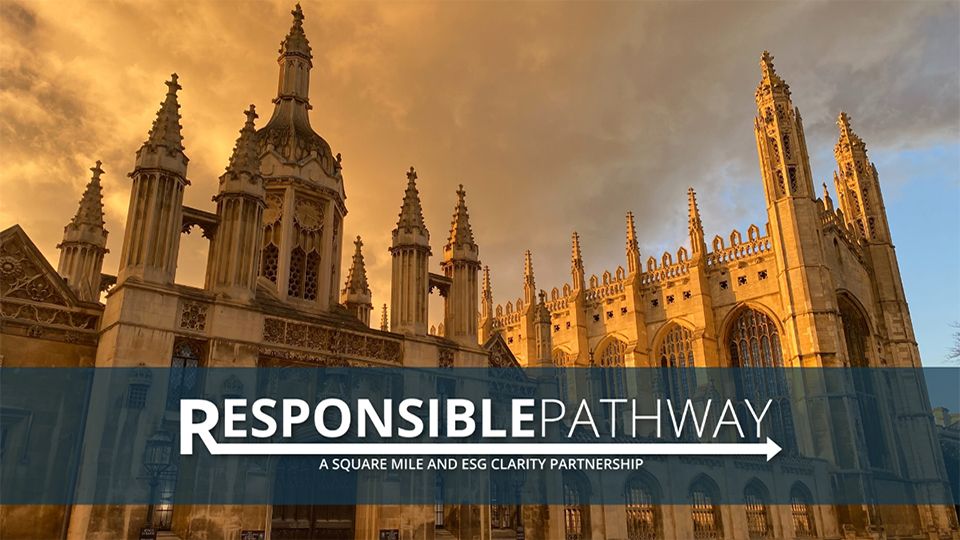Although thematic investing can address Sustainable Development Goals (SDGs) and engage clients on issues they care about, they come with data and investment identifications challenges, causing investors to either ‘love or hate them’.
In the second panel of the 2022 Responsible Pathway Live event, Responsible Thematics, experts from J.P. Morgan Asset Management, AllianceBernstein and Natixis Investment Management, discussed their growth and the opportunities and risks to consider. Here are the five key takeaways.
- Address particular issues
Katherine Magee, executive director at J.P. Morgan Asset Management, described thematic investing as an “evolution” in portfolio construction when it comes to responsible investing.
“Historically we have portfolios built around sector or factor lines, but now we are starting to see investors think about building them around thematic ones,” she said.
“Thematic investing focuses on what companies are doing, namely the goods and services they are providing to the broader economy that can get us to a more sustainable and inclusive world.”
Markus Peters, senior investment strategist – fixed income at AllianceBernstein, added: “Some investors have particular issues they care deeply about – such as the climate, or social issues around diversity and inclusion – and this is what thematics allows you to do,” he said.
2. Define the universe
For Magee, one of the biggest challenges when investing in thematics is how to find companies, given that themes such as biodiversity and sustainable infrastructure don’t have individual sectors that managers can tap into.
“At JPAM we have used the power of big data and artificial intelligence to build a tool that allows our managers to search whatever theme they are interested in,” she said. “From there we do bottom-up fundamental research on every company we own.”
Simon Gottelier, senior portfolio manager at Natixis Investment Management, said when the company launched Thematics Asset Management (a subsidiary of Natixis) a key plank of what it wanted to be was a long-term responsible investor.
“We assemble various thematic screens to define the companies into which we can invest,” he said.
“In the running of my water portfolio, the market is very much about kicking out those that don’t conform, with the goal of finding companies that provide a service or a technology that has a long-term benefit in terms of water and water conservation, so you have a clean investable universe from the get-go.”
3. Don’t rely on the SDGs
Although much importance is placed upon the 17 SDGs, Magee and Gottelier said not all goals are investable.
“In the long term, thematic funds generally are tilted towards sustainable development areas of the economy,” said Gottelier. As such, while they are important, they are not something Natixis would consider directly when assessing companies from a bottom-up perspective.
See also: – SDGs: Top Trumps of sustainable finance?
However Peters argued the SDGs don’t just have to be an ex-post measure for reporting to clients and can instead be a guide as to how managers “slice and dice” their investment universe.
“I agree the 17 goals are too broad in order to use as a roadmap, but the 169 sub-targets that have been defined make it more specific as to what the overarching goals are trying to accomplish,” he said.
“This is a good starting point to think about what your product actually contributes to achieve these targets in the long term.”
4. Consider thematics’ place in a portfolio
While not advising investors to put all their money into thematic funds, Peters said they are an “interesting building block” that can help diversify their overall market exposure.
“From a fixed income view, there’s a strong argument to hold thematics if you want to be a bit more defensive,” Peters said. “However, I am not a strong advocate of holding the asset in isolation, that’s not the way fixed income works.”
With the estimated costs of achieving net zero by 2050 ranging from £140trn to $250trn, Magee added the investment case for thematic investing is compelling.
“This works out to about $5-6trn of investment every year to decarbonise,” she said. “To put this into perspective, today we spend $5trn a year on all technology.”
Gottelier described thematics as a Marmite investment, in that investors believe in it, or they don’t.
“I have seen thematics used in global allocations, satellite, natural resources and ESG,” he said.
“They fit wherever people want them to, but investors should certainly not think that just because there is an ESG input they will be sacrificing performance.”
5. Assess the data challenges
Magee said one of the challenges for thematic investing to overcome is the need for more data.
“While we can look at ESG score and some carbon metrics as a data point to demonstrate progress, beyond this the coverage isn’t great,” she said.
“The more we can get consistent reporting and more data from companies, I think the easier it will be to measure if we are doing a good job.”
For Peters another challenge is to simply keep investors engaged.
“I would love to see clients that have gone on the journey with us and not thrown in the towel because progress hasn’t been fast enough, or because controversy around greenwashing in the industry has put them off,” he said.
All 5 panel discussions are available to watch on demand here: https://www.bonhillevents.com/EN/ResponsiblePathwayLive-July2022/OnDemand








